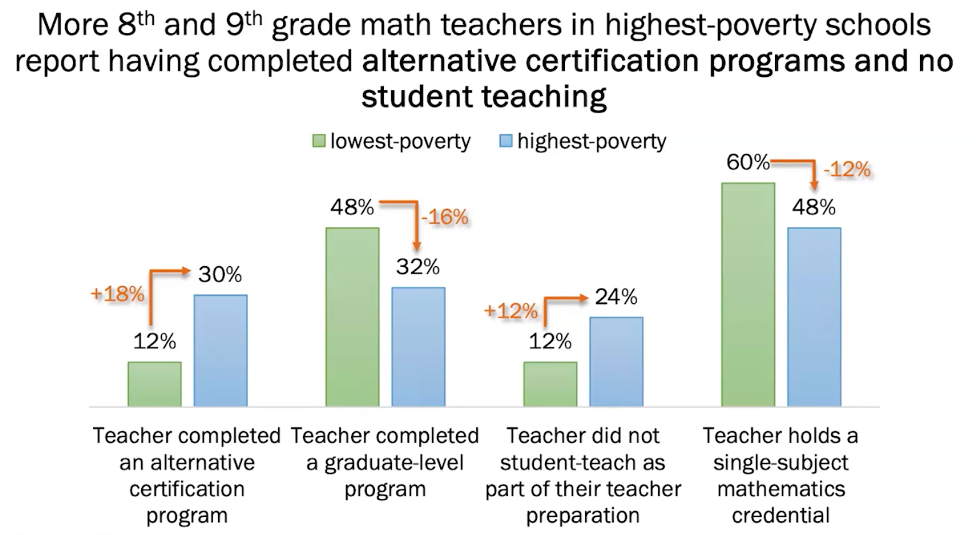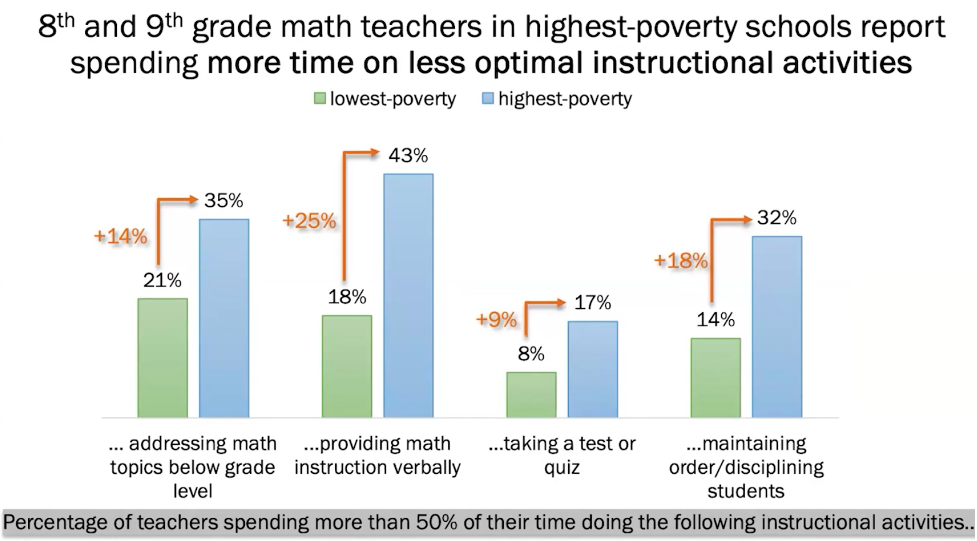Three Barriers to Learning Algebra in Middle and Poor High Schools

Conversely, poor schools are less likely to adopt an all-eighth-grade algebra policy. About half of the wealthiest schools offered algebra to all of their eighth-graders, compared to one-third of the poorest schools.
Mathematics teachers in the poorest schools tended to have poor technical preparation. They are more likely to enter the profession without a traditional college or university degree, instead completing another on-the-job certification program, often without supervised student teaching. They are also less likely to have a graduate degree or a degree in mathematics.

In the survey, a third of math teachers in low-income schools reported spending more than half their time teaching subjects below grade level, as well as managing student behavior and disciplining students. Lecture teaching, as opposed to classroom discussion, was more common in the poorest schools compared to the richest schools. RAND researchers also found similar disparities in instructional patterns when examining schools by race and ethnicity, with black and Hispanic students receiving “significantly less” education than white students. But these disparities were stronger by income than by race, indicating that poverty may be a bigger factor than bias.

Many communities have tried to include more eighth graders in algebra classes, but that has sometimes left students worse off. “Just giving them eighth-grade algebra isn’t magic,” said AIR’s Goldhaber, who commented on RAND’s analysis during a Nov. 5. Either the material is too challenging and students are failing or the course was “algebra” in name only and did not really cover the content. And without a college prep track of advanced math classes to take after algebra, the benefits of taking Algebra 1 in eighth grade are unlikely to accumulate.
Nor is it economically viable for many low-income, low-income schools to offer an Algebra 1 course that only a minority of students are advanced enough to take. It would be necessary to hire a teacher even for a few students and those resources could be better used for something else that would benefit more students. That puts the most advanced students in low-income schools at a disadvantage. “It’s a difficult problem for schools to deal with alone,” said Goldhaber.
Improving the quality of math teachers in the poorest schools is an important first step. Some researchers have suggested paying strong math teachers to work in low-income schools, but that would also require renegotiating union contracts in many cities. And, even with financial incentives, there is a shortage of math teachers.
For students, AIR’s Goldhaber says the time for math intervention is in elementary school to ensure low-income students have basic math skills. “Do it before middle school,” Goldhaber said. “For many students, middle school is too late.”
This story is about eighth grade math written by Jill Barshay and produced by The Hechinger reporta non-profit, independent news organization focused on inequality and innovation in education. Sign up Evidence Points and so on Hechinger newsletters.



